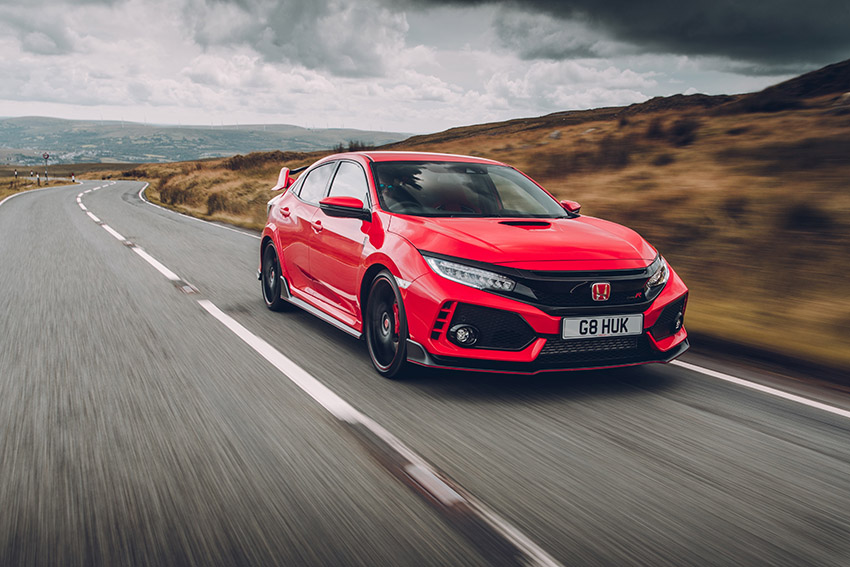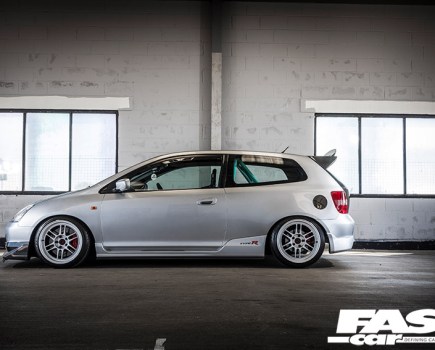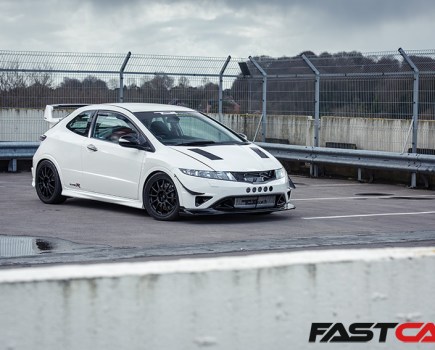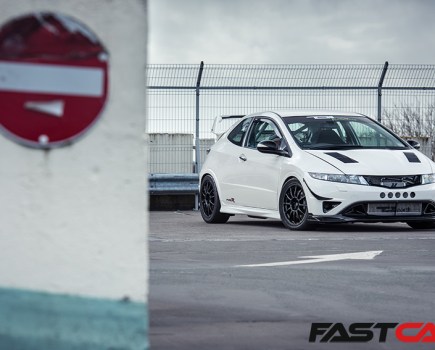The Honda Civic Type R FK8 is a truly exceptional machine. It delivers astonishing performance coupled with a sublime chassis making it one of the greatest modern hot hatches we’ve driven. This guide takes a more detailed look at the model, and the potential issues you should be aware of before buying one.
Honda Civic Type R FK8 – A Brief History
Evolution Not Revolution
On sale from 2017-2021, the Honda Civic Type R FK8 was all about the numbers. Before it even hit the showrooms, Honda was boasting of its benchmark-setting Nordschleife time – a frankly unbelievable 7:43.8. For a smidge over 30,000, buyers were furnished with a tasty platter of figures; 320hp, 169mph, 0-62mph in 5.7s, 1380kg. Undoubtedly, the FK8 is an awesome machine. We should know; we’ve driven a few over the years. Check out our FK8 Civic Type R review here.
For the US market, the FK8 represented the first official Civic Type R to go on sale in North America. However, the US-spec FK8’s featured less power than European and Japanese models. Albeit only miniscule, with a power output of 316hp. Performance figures remains unchanged against other FK8 market cars.
The transition from FK2 to FK8 saw the existing engine and gearbox being carried over to the new model (much like with the EP3 and FN2). Torque remained the same and horsepower increased by 10hp. But the chassis was entirely reimagined to create something a lot more cosseting and friendly than the often harsh-riding FK2. Standard trim was impressive, too. It featured carbon fiber side skirts, a rear diffuser, and a distinctive triple-exit exhaust designed to help reduce boom on the motorway.
Freshening Things Up
For the 2020 model year, the connoisseur’s hot hatch received a mid-life refresh. While it still wore the brutally uncompromising Touring Car-inspired aesthetic, it had evolved to become even smarter. Honda’s way with such things is to constantly reassess and refine. The upgrades to the 2020 FK8 were subtle but significant. There was a larger radiator, which allowed for a 13% bigger front grille, and that in turn dictated a redesign of the splitter. The already devastating brakes were levelled-up to track-spec two-piece rotors. This made them even more hardcore and took 15mm of travel out of the brake pedal to give you more feel. The adaptive damping was re-tuned to refine wheel control through aggressive cornering. Finally, the ball-shaped gear knob was replaced with a more tactile teardrop design, like in a DC2 Integra or EP3.
The mechanicals were untouched, the overall package being just that little bit sharper. There was also a new paint color in the line-up, Boost Blue, along with two new versions of the car. The Type R Sport Line was a little more subtle, a bit like Porsche’s ‘Touring’ option for the 911 GT3. It featured a much smaller rear spoiler, downsized 19” wheels (instead of 20”), and the seats were trimmed in tasteful black instead of red. Going in the other direction was the Type R Limited Edition. Only 20 came to the UK, and it was bright yellow and came with forged BBS alloy wheels and Michelin Cup 2s as well as a whole load of weight loss. The stereo, air-con and sound deadening went in the bin. Believe us when we say that car on those tires is very frisky on a wet track!
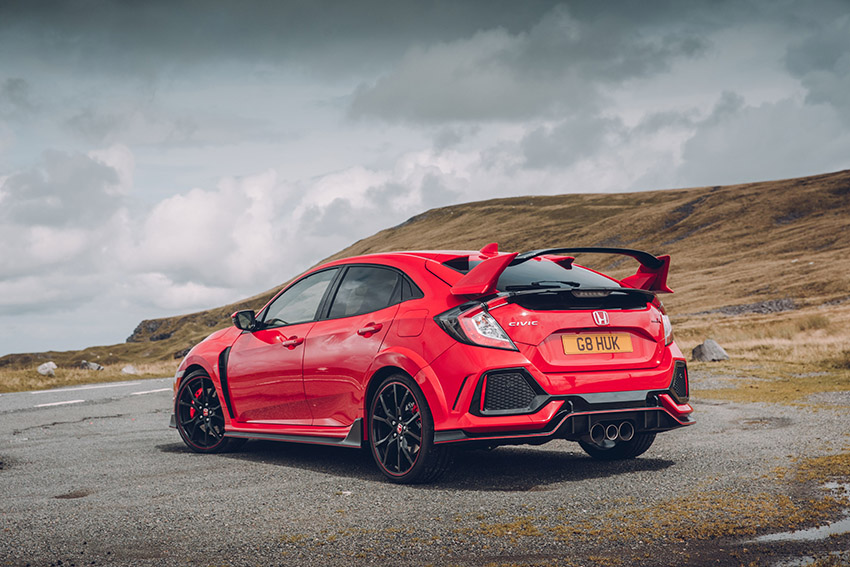
In Conclusion…
The fresh upgrades to the facelift Honda Civic Type R FK8 may be subtle, but they count for a lot. Arguably the best hot hatch on the market became even better. Of course, even the pre-facelift FK8s were supremely capable machines and, having officially ceased production, they’re all very much sought after today.
Honda Civic Type R FK8 Most Common Problems
- Second-gear grind
- Sensitive to alignment
- Infotainment system crashes
- Premature bolster wear
- Rotors/Discs cracking
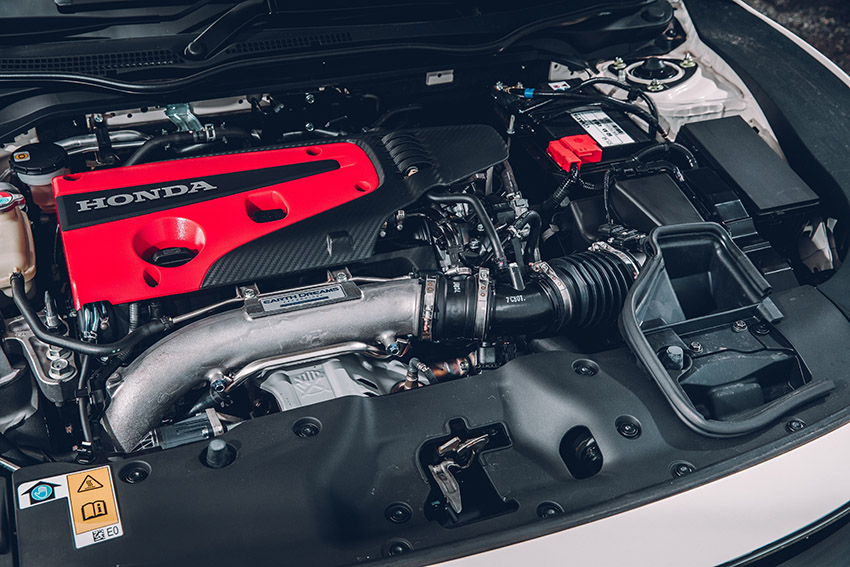
What to look out for when buying the Honda Civic Type R FK8
Below, we’ll take a more in depth look at the different areas of an FK8 and what you should be aware of before going to buy one.
Honda Civic Type R FK8 Engine
The K20C1 turbocharged four-cylinder VTEC is an absolutely awesome engine that delivers incredible performance. It offers plenty of modding potential, and, best of all, has proved to be incredibly reliable so far. Considering the FK8 is now five years old, you’d expect to see some issues creeping in or coming to light on higher-mileage cars. However, predictability, with it being a Honda, even in Type R guise, so there’s really nothing to report here. This is obviously good news if you’re shopping for one, so no complaints there.
If you’re looking to extract a bit more performance from that 2.0-litre engine, check out our FK8 Type R tuning guide.

Transmission
The transmission, while fundamentally carried over from the FK2, was reworked for this new application with a shorter shift throw. It also featured a counterweighted gear knob, a new single-mass flywheel, and a top ratio that’s 7% shorter. It’s a great gearbox, but the fact that it’s pretty much the FK2’s box means it also comes with a common FK2 issue, that being the infamous second-gear grind.
It’s a common problem that arises and seems to be one that Honda hasn’t got a fix for, and you basically get grinding and resistance when going from first to second, most often during fast shifts. It doesn’t always happen, it might not happen at all for you, but it’s something to be aware of. There isn’t one fix, however, several solutions have been discussed by owners. These include deleting the clutch delay valve, changing the transmission fluid, with Motul Multi ATF being suggested by some owners, adjusting the CMC plunger behind the clutch pedal, and, ultimately, just shifting gently from first to second.
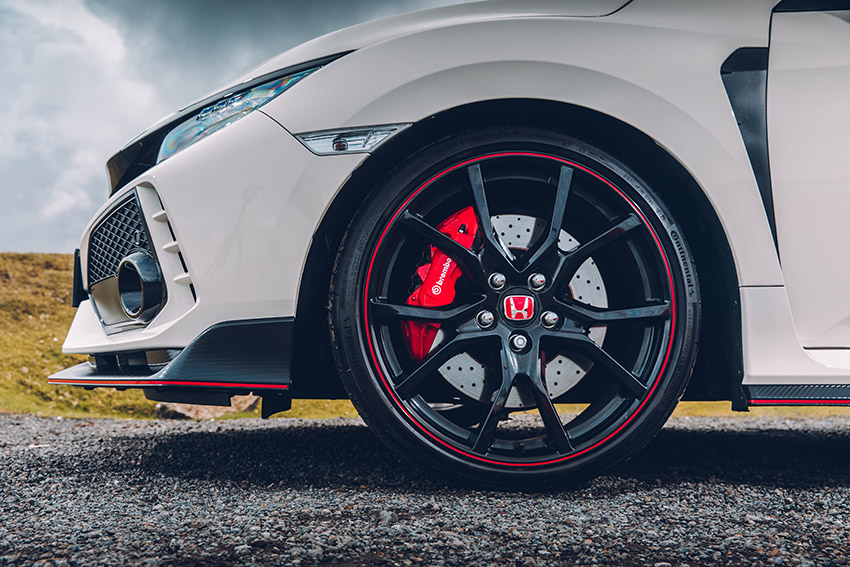
Honda Civic Type R FK8 Chassis – Suspension, Brakes and Wheels
With the clever dual-axis MacPherson strut front end and the new multi-link rear, this is a highly sophisticated chassis, and that means it’s also very sensitive to setup. If the tracking’s out, it can feel like a wobbly mess, so it’s crucial to ensure that the alignment is set either to the manufacturer settings or those of a trusted aftermarket specialist.
The two-piece discs on facelift models require careful inspection. It’s not unusual for them to sound a bit squeaky, but if you can see hairline cracks emanating from the drilled holes, then they’ve clearly taken repeated harsh use and will require imminent replacement.
There is some debate about what wheel size is best for the FK8. Naturally, when it comes to looks, bigger is almost always better, and it seems that Honda agrees as all FK8 CTRs came with 20s as standard until the Sport Line was launched, which came equipped with 19s. However, some specialists feel that both these wheel sizes are simply too big for the FK8. You want 18s if you want the sweetest-handling setup.
However, you have to consider that as the car was launched with 20s, it’s been engineered for 20s, and some owners have found that downsizing robs the FK8 of some of its steering feel. Others have also stated that dropping down to 18s results in a slight increase in torque steer. But to balance that out, you can get some lightweight 18s that will reduce unsprung weight, and the ride will be much better, which is definitely something to consider if your CTR is your everyday car and how bad a lot of the UK’s roads are.
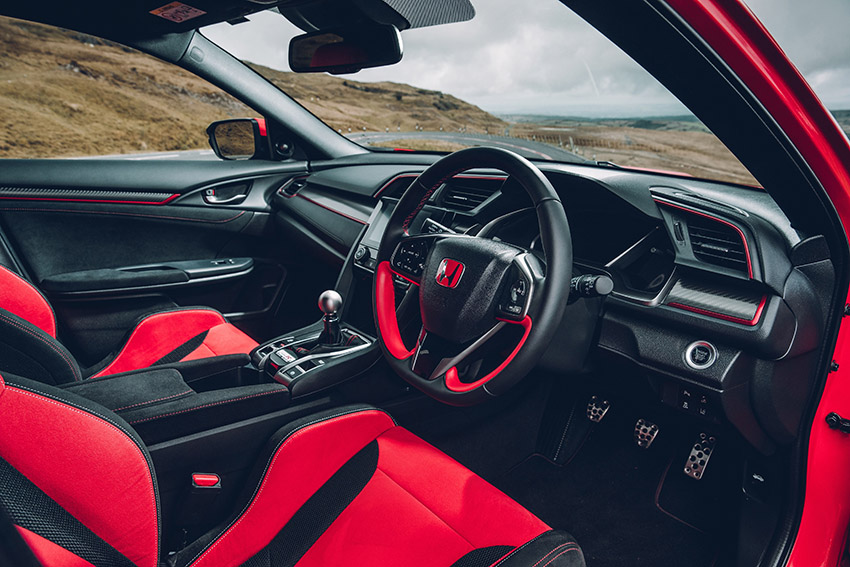
FK8 Interior
When it comes to the interior, this is a very pleasant place to be with some of the best seats in the business. However, those chunky bolsters do wear over time because you’re always rubbing against them when getting in and out of the car, but you can get covers to protect your seats. The infotainment system has a habit of crashing, so don’t be surprised if it happens – some owners have had their whole units replaced, but that hasn’t solved the problem, so be prepared for that to happen. Finally, there is an annoying rattle from the dash at around 4500rpm. This has been reported by a few owners, and no one can deduce where it’s coming from, so let’s just call it character.

Exterior
Generally speaking, there’s really not much to worry about in terms of bodywork. Obviously, inspect any car carefully to make sure there’s no damage, no dings or dents, all the panels line up correctly, the color matches everywhere, and there are no suspicious signs of a possible prang. The CTR is the kind of car that encourages a “Watch this…!” moment followed by the person behind the wheel rapidly running out of talent, and FK8s are likely to have been driven hard, and might have also seen a few track days, so it pays to be vigilant and carry out a careful and thorough inspection. Some owners have also reported that cracks have started appearing where the roof meets the sides of the boot, with rust forming around the cracks. It’s a warranty fix, but it’s something to be aware of.
Honda Civic Type R FK8 prices
Despite the introduction of the new FL5 model, FK8 Type R prices still remain strong. Price fluctuations depend on the usual factors, mileage, condition, history, modifications etc. As a rough guide, prices tend to float from $32,000-$45,000 in the US, with the upper end reserved for the special edition models. In the UK, prices range between £19,000-£35,000.
Looking for the freshest Type R technology that Honda has to offer? Then check out the latest FL5 Civic Type R.
Tech Spec: Honda Civic Type R FK8
- Engine: 2.0-litre four-cylinder turbo k20c1
- Transmission: Six-speed manual gearbox
- Max Power: 320hp @ 6500rpm. 316hp US market.
- Max Torque: 295lb ft @ 2500-4500rpm
- 0-62mph: 5.7 seconds
- Top Speed: 169mph
- Weight (kerb): 1380kg
- Economy: 36.7mpg
- Emissions (CO2): 176g/km
- Price When New (OTR): $32,795/£32,995 (GT)
Words: Daniel Bevis and Elizabeth de Latour. Photos: Honda.
Don’t forget, we’re hosting our Trax event this September 1st at Silverstone! Be sure to visit the event website for more information and to purchase your tickets. This year’s show is not to be missed! Check out our Trax preview here to find out why.

